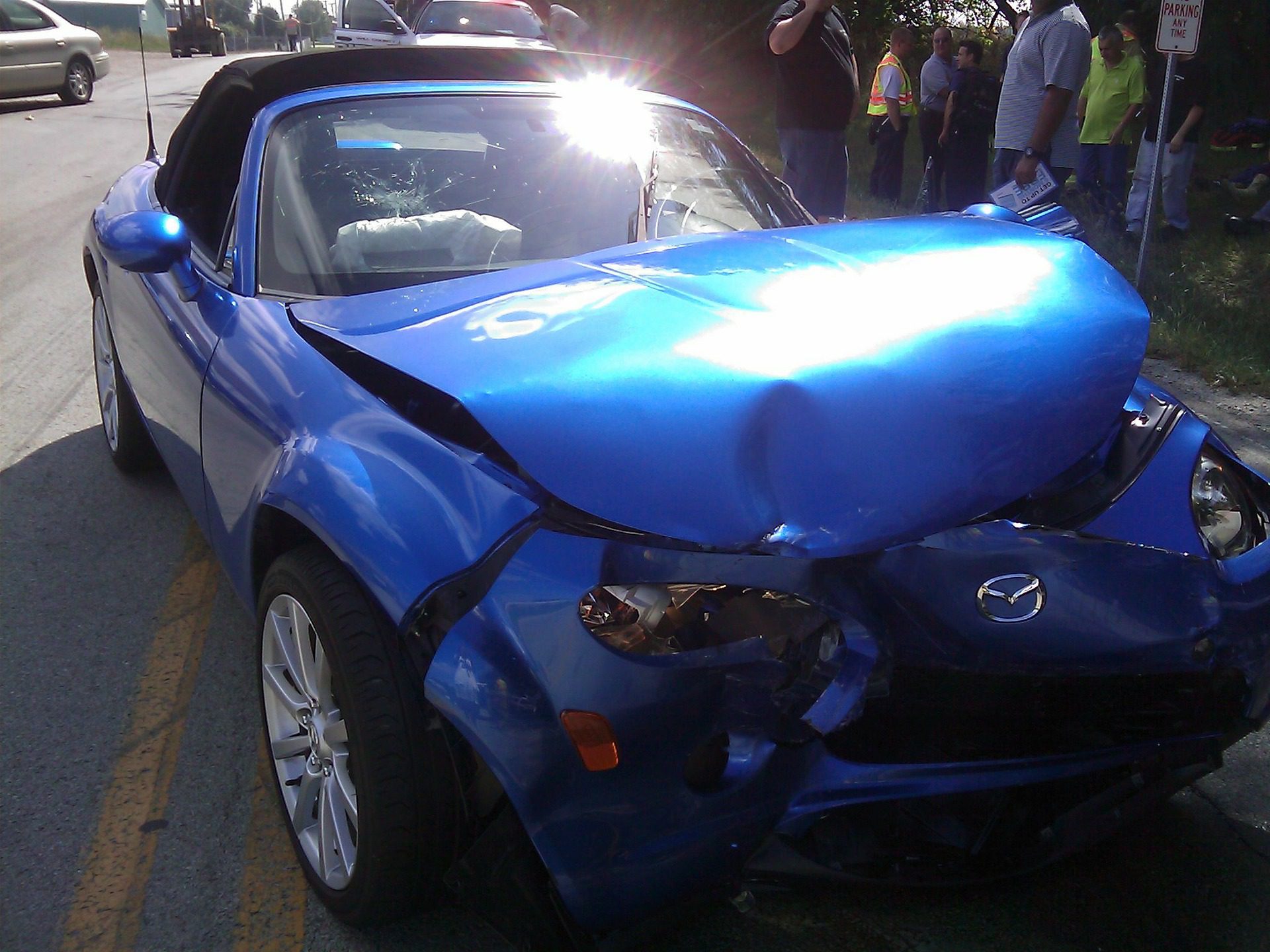Who’s At-Fault for a Head-On Collision?
A head-on collision (also known as a frontal collision) doesn’t happen frequently. However, when one does occur, the ramifications can cause serious injuries and, potentially, fatalities.
One of the most challenging aspects of handling a head-on crash is determining who’s at fault.
This article will explain what is a head-on collision and the factors that determine the liable party.
What is a Head-On Collision?
A head-on collision car accident is when two vehicles traveling in opposite directions strike each other front end-to-front end.
While an injury can be expected from any type of vehicular accident, the scope of a head-to-head collision is magnified. Statistics dictate that head-on collision injuries are more likely to end in severe bodily harm or even death. This increased threat of damage is applied to both drivers and their passengers.
According to a report from the Insurance Institute for Highway Safety, a head-on accident has a 56% probability of ending in a fatality for drivers and passengers in a sedan.
Aside from fatality, some of the more frequent injuries can include:
Lower Appendage Damage
Injuries below the waist are extremely common in a head-on car accident. The resulting damage can require extensive surgery with the possibility for the need of amputation.
Whiplash
Commonly attributed to rear-end accidents, any injury to the neck due to unexpected, violent movement can occur regardless of the initial point of impact, resulting in whiplash. The symptoms tied to whiplash include vertigo, nausea, pain, limited mobility, and fatigue.
Traumatic Brain Injury
If someone strikes their head or even suffers whiplash, they may be afflicted with a traumatic brain injury (TBI.) Determining that a head-on car collision victim is experiencing TBI can be difficult as side effects may not express themselves immediately. TBI also comes with a large range of symptoms, some relatively mild to the more extreme, such as falling into a coma.
Upper Torso Injuries
A head-on collision can also cause injury to a driver and their passengers’ chest. Safety equipment, such as seat belts and airbags, are designed to prevent serious injury. However, as inertia has built up a substantial amount of kinetic energy, the abrupt displacement can leave the victim with injuries that can range from bruising up to a punctured lung.
Spinal Cord Injury
One of the most devastating injuries experienced from a head-on collision is one to the spinal column. Damaged nerves and broken vertebra can lead to paralysis and even death.
Common Causes of Head-On Collisions
Accidents are never planned, and at times, the result of a head-on collision may not be the fault of either driver. There may be black ice on the road, or a mechanical failure can suddenly arise, leading to a head-to-head collision.
However, the majority of head-on collision injuries occur because one of the drivers is steering into on-coming traffic due to negligence. Common reasons include:
- Drunk driving
- Using a cell phone
- Passing a vehicle unsafely
- Driving while fatigued
- Not accounting for environmental factors
- Disregarding traffic signs and signals.
Whatever the reason behind the head-on collision, accidents typically occur because one party has not taken the proper safety precautions to avoid an accident.
Who’s At Fault?
Determining who is at-fault in a head-on collision is similar to placing liability for any other vehicular crash.
It usually falls to the party that didn’t behave properly or use a level of care and reason that an ordinary person would to avoid an accident under the same circumstance. This is called negligence.
Regarding a head-on collision, the negligent party is one that caused the accident due to a lack of sound judgment or behavior. Examples include not paying attention to road signage, drifting into oncoming traffic, or being in an altered state of mind due to drugs or alcohol.
How to Prove Who’s At-Fault
The most critical piece of evidence when trying to prove fault for a head-on collision car accident is where on the road the cars struck each other. If one of the vehicles was traveling in the wrong direction, unless there are substantial mitigating factors, that driver will most likely be held liable.
However, mitigating factors do exist. The car in the wrong lane could have taken evasive maneuvers to avoid causing a more serious accident in front of them. It’s also possible that they were themselves struck and pushed into oncoming traffic by another vehicle. If this is true, then liability may be lessened or entirely placed on the initial vehicle that caused the head-on collision.
Regardless of who is assumed to be at fault, both parties should seek the counsel of an experienced personal injury attorney as soon as possible. Evidence of a head-on collision is hard to preserve, but with the aid of a lawyer, they can collect and analyze all of the facts to help build your case.
Law firms will also have access to an accident reconstruction expert who can help piece together the events of a head-on crash.
Contact Thomas J. Henry Today
A head-on collision can have enduring consequences and lead to a lifetime of medical care. To ensure that you receive the compensation you deserve due to a head-on collision, contact Thomas J. Henry.
Whether you need a San Antonio auto accident lawyer or a Corpus Christi car accident lawyer, our legal team of experts is here to help you in your time of need. Call Thomas J. Henry today at 361-985-0600.


